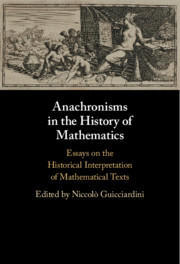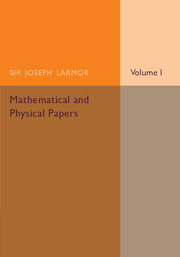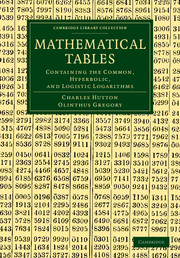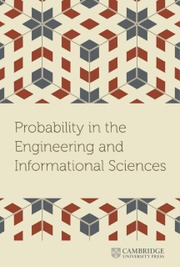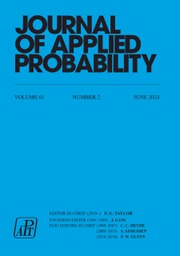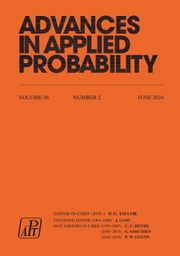Who Gave you the Epsilon?
This book picks up the history of mathematics from where Sherlock Holmes in Babylon left it. The 40 articles of Who Gave You the Epsilon? continue the story of the development of mathematics into the nineteenth and twentieth centuries. The articles have all been published in the Mathematical Association of America journals and are in many cases written by distinguished mathematicians such as G. H. Hardy and B. van der Waerden. The articles are arranged thematically to show the development of analysis, geometry, algebra and number theory through this period of time. Each chapter is preceded by a foreword, giving the historical background and setting and the scene, and is followed by an afterword, reporting on advances in our historical knowledge and understanding since the articles first appeared. This book is ideal for anyone wanting to explore the history of mathematics.
- Contains articles by J. L. Coolidge, B. L. van der Waerden, Hermann Weyl and G. H. Hardy
- Each theme is accompanied by a commentary by the authors
- Ideal for those teaching or studying mathematics who want to understand how familiar aspects of their subject were developed
Product details
March 2009Hardback
9780883855690
439 pages
274 × 194 × 27 mm
1.01kg
This item is not supplied by Cambridge University Press in your region. Please contact Mathematical Association of America for availability.
Table of Contents
- Introduction
- Part I. Analysis:
- 1. Who gave you the epsilon? Cauchy and the origins of rigorous calculus Judith V. Grabiner
- 2. Evolution of the function concept: a brief survey Israel Kleiner
- 3. S. Kovalevsky: a mathematical lesson Karen D. Rappaport
- 4. Highlights in the history of spectral theory L. A. Steen
- 5. Alan Turing and the central limit theorem S. L. Zabell
- 6. Why did George Green write his essay of 1828 on electricity and magnetism? I. Grattan-Guinness
- 7. Connectivity and smoke-rings: Green's second identity in its first fifty years Thomas Archibald
- 8. The history of Stokes' theorem Victor J. Katz
- 9. The mathematical collaboration of M. L. Cartwright and J. E. Littlewood Shawnee L. McMurran and James J. Tattersall
- 10. Dr David Harold Blackwell, African American pioneer Nkechi Agwu, Luella Smith and Aissatou Barry
- Part II. Geometry, Topology and Foundations:
- 11. Gauss and the non-Euclidean geometry George Bruce Halsted
- 12. History of the parallel postulate Florence P. Lewis
- 13. The rise and fall of projective geometry J. L. Coolidge
- 14. Notes on the history of geometrical ideas Dan Pedoe
- 15. A note on the history of the Cantor set and Cantor function Julian F. Fleron
- 16. Evolution of the topological concept of 'connected' R. L. Wilder
- 17. A brief, subjective history of homology and homotopy theory in this century Peter Hilton
- 18. The origins of modern axiomatics: Pasch to Peano H. C. Kennedy
- 19. C. S. Peirce's philosophy of infinite sets Joseph W. Dauben
- 20. On the development of logics between the two world wars I. Grattan-Guinness
- 21. Dedekind's theorem: √2 × √3 = √6 David Fowler
- Part III. Algebra and Number Theory:
- 22. Hamilton's discovery of quaternions B. L. van der Waerden:
- 23. Hamilton, Rodrigues, and the quaternion scandal Simon L. Altmann
- 24. Building an international reputation: the case of J. J. Sylvester (1814–1897) Karen Hunger Parshall and Eugene Seneta
- 25. The foundation period in the history of group theory Josephine E. Burns
- 26. The evolution of group theory: a brief survey Israel Kleiner
- 27. The search for finite simple groups Joseph A. Gallian
- 28. Genius and biographers: the fictionalization of Evariste Galois Tony Rothman
- 29. Hermann Grassmann and the creation of linear algebra Desmond Fearnley-Sander
- 30. The roots of commutative algebra in algebraic number theory Israel Kleiner
- 31. Eisenstein's misunderstood geometric proof of the quadratic reciprocity theorem Reinhard C. Laubenbacher and David J. Pengelley
- 32. Waring's problem Charles Small
- 33. A history of the prime number theorem L. J. Goldstein
- 34. A hundred years of prime numbers Paul T. Bateman and Harold G. Diamond
- 35. The Indian mathematician Ramanujan G. H. Hardy
- 36. Emmy Noether Clark H. Kimberling
- 37. 'A marvellous proof' Fernando Q. Gouvˆea
- Part IV. Surveys:
- 38. The international congress of mathematicians George Bruce Halsted
- 39. A popular account of some new fields of thought in mathematics G. A. Miller
- 40. A half-century of mathematics Hermann Weyl
- 41. Mathematics at the turn of the millennium Philip A. Griffiths
- Index.


